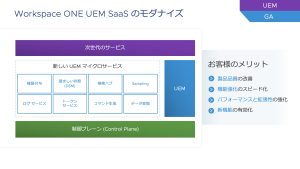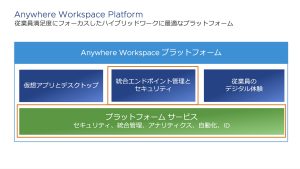The companies we at VMware Tanzu work with are constantly looking for better, faster ways of developing and releasing quality software. But digital transformation means fundamentally changing the way you do business, a process that can be derailed by any number of obstacles. In his recent video series, my colleague Michael Coté identifies 14 reasons why it’s hard to change development practices in large organizations. In this companion series of blog articles, we’re exploring each of those topics in more depth, providing advice on how you can address them in your business.
Today, let’s look at the seventh digital transformation challenge: Bottom-up change doesn’t work.
Change is hard
Effecting change in an enterprise environment is hard work. You often bump into old rules and habits no one remembers starting but everyone swears are still needed. There’ll likely be a material portion of the workforce that has grown resistant to change, having seen many initiatives come and go. “It’ll never work,” they might say, or “We tried this before.” The worst is when they say, “We already do that; we just have a different name for it.” Nevertheless, you see potential for improvement and decide to ignore the naysayers and continue on your brave path.
Bottom-up change
Individual teams are the most common place to find successful change within an enterprise environment. This “bottom-up” change is the ability for individuals, such as developers or engineers, to change the way they work and improve processes within their immediate scope of influence. In addition to being a great way to make iterative improvements on how a team operates, “bottom-up” change builds engagement through a stronger sense of autonomy. Bottom-up change is critical to the organization and plays a crucial role in driving transformation. As Terry Merriman said back in 2010, “Performance is personal before it is organizational.”
The problem is that no team works in a vacuum and the scope of bottom-up change is inherently limited and, in some cases, damaging. A team can optimize the way they work, but at some stage they will become limited by other teams or corporate policy. If each team has complete autonomy to work in new ways with different tools, then over time the organization will see significant divergence, making it difficult for teams to engage with one another.
So while it is necessary, it’s important to recognize that bottom-up change is not sufficient on its own. Teams do not have the authority or ability to set or change the overall organizational structure, policies, priorities, or incentives.
Top-down change
If bottom-up change is insufficient, then what about a “top-down” approach? Top-down change involves executives and leaders at the organizational level who have the power to shape the business architecture. They can initiate change by setting the strategic direction, establishing new policies, and reallocating resources.
Top-down change is therefore most appropriate when the change is strategically important and requires a large, decisive shift from existing structure or function. The more radical or rapid the change, the more important it is that leadership is in favor and responsible for driving it.
The problem is that a top-down approach implies imposed change, because the initiative comes from the top. Developers and engineers can feel excluded because decision-making has taken place in isolation at a higher level, even though they are directly affected. Worst still is when a change initiative is approached like it’s a marketing campaign; there’s a story to sell, a set of very enthusiastic business leaders presenting the same “everything is going to be great!” slide deck, and a series of mandatory sessions that everyone must attend so that they too can understand how great things are going to be.
Simply issuing directives from the top without getting buy-in and commitment from individuals at all levels of the organization can lead to resistance and a mere "theater of change," where people continue doing what they've always done, just with new reports or metrics.
Successful change requires a balanced approach that involves all layers of the organization. It can start from the bottom or the top, but it needs commitment and participation from everyone to be successful.
Getting it right
When it comes to bottom-up change, it can appear incredibly effective within its limited scope. However, it’s essential to consider the wider context of the business and avoid falling into the trap of local optimization. Looking across the entire organization and understanding how the change aligns with broader goals and objectives is crucial. Similarly, top-down change might appear to have a rapid impact, but it should not be taken as gospel without critical evaluation and adaptation to the real-world state of the organization. It’s important to continually measure and assess the impact of top-down changes to ensure they are truly successful.
Combining bottom-up and top-down efforts is key to driving meaningful and lasting transformation in large organizations. It requires collaboration, open communication, and a willingness to challenge the status quo to create positive change across all levels of the business.
The “top-down” component should set a vision that defines the need for change, the desired outcomes, and the strategy or framework that will be used to empower teams to help move the organization in the chosen direction and integration of those new practices into the broader organizational model. Leadership must play a more active role in encouraging and supporting a series of small, iterative wins to build trust in the workforce, highlighting how the efforts of individual teams form the basis of broader decision making. Done correctly, the workforce should feel that they are able to participate in helping to shape and realize the outcomes.
My friend and colleague Gautham Pallapa presents an interesting approach in his article “Business Transformation Simplified.” He describes the value of looking at change and transformation as two discrete parts of the puzzle. He defines change as the “incremental adjustment of current practices, policies, and processes” and transformation as a “comprehensive break from a company’s traditional presumptions and the adoption of new operating paradigms.” If you’re undertaking a program of change, I strongly recommend his 4×3 approach to business transformation.
Read about other common digital transformation bottlenecks we’ve encountered and how to overcome them:







